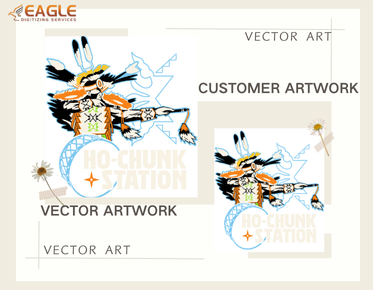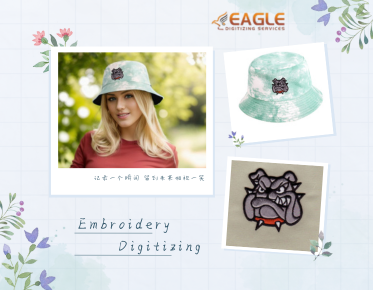Water-Based Screen Printing Explained: Uses You’ll Love
Water-based screen printing represents a
significant shift in the printing world, combining traditional techniques with
modern, eco-conscious advancements. Unlike conventional plastisol inks, which
rely on synthetic materials and require high heat for curing, water-based inks
use water as their primary solvent. This approach not only makes the process
more environmentally friendly but also aligns with the growing demand for
sustainable practices in manufacturing. By utilizing water as a carrier, these
inks offer a fresh perspective on screen printing, promising both aesthetic and
functional benefits.
Why Choose Water-Based Inks?: Benefits Over Traditional Plastisol Inks
Choosing water-based inks over traditional plastisol inks is akin to
opting for a greener, more refined approach to screen printing. Water-based
inks are lauded for their minimal environmental impact, as they contain fewer
volatile organic compounds (VOCs) and are less harmful to the ecosystem.
Additionally, they provide a softer feel on fabric, allowing garments to maintain
their breathability and comfort. The vibrant color output and ability to
capture fine details further enhance the quality of the final product, making
water-based inks a compelling choice for modern printing needs.
The Basics of Water-Based Screen Printing
What Are Water-Based Inks?:
Composition and Characteristics
Water-based inks are composed of pigments suspended in a water-based
medium, typically featuring a mix of water, binders, and stabilizers. Unlike
plastisol inks, which are made from PVC and require plasticizers, water-based
inks rely on water to keep the pigment particles evenly distributed. This
composition results in a thinner, more breathable print that integrates
seamlessly with the fabric. The characteristic of being water-soluble, until
dried, allows for easier cleanup and less hazardous waste, marking a notable
departure from the more toxic plastisol formulations.
How Water-Based Printing Works: The
Process Explained
The process of water-based screen printing begins with preparing the
design and coating the screen with a water-resistant emulsion. Once exposed to
light, the emulsion hardens, leaving a stencil of your design. The screen is
then loaded onto the printing press, and water-based ink is spread across the
mesh. As the squeegee passes over the screen, the ink is pushed through the
mesh openings onto the substrate below. Unlike plastisol inks, which require
high temperatures to cure, water-based inks typically dry through evaporation,
although some may need mild heat for optimal durability.
Differences Between Water-Based and
Plastisol Inks: A Comparative Overview
Water-based inks differ significantly from plastisol inks in several
key aspects. While plastisol inks are opaque and create a thicker, often
heavier print, water-based inks are more transparent and provide a softer hand
feel. Water-based inks also allow the fabric to breathe more easily,
contributing to greater comfort. On the environmental front, water-based inks
are less damaging, containing fewer harmful chemicals and producing less waste.
Conversely, plastisol inks require higher curing temperatures and can be less
forgiving when it comes to achieving fine detail.
Advantages of Water-Based Screen Printing
Eco-Friendly Printing: The
Environmental Benefits of Water-Based Inks
One of the most compelling advantages of water-based screen printing
is its eco-friendliness. Water-based inks are designed with environmental
considerations in mind, containing fewer harmful chemicals and producing less
waste compared to their plastisol counterparts. The reduced reliance on PVC and
other toxic substances means that water-based printing contributes to lower
emissions and less environmental pollution. By choosing water-based inks,
printers can significantly reduce their carbon footprint and align with
sustainable manufacturing practices.
Breathability and Comfort: How
Water-Based Inks Affect Fabric Feel
Water-based inks excel in preserving the natural feel of the fabric,
which is a major advantage for apparel printing. Unlike plastisol inks, which
can create a plasticky, heavy layer on the fabric, water-based inks penetrate
the fibers, resulting in a softer, more breathable print. This quality enhances
wearer comfort and maintains the garment’s flexibility and natural drape. The
breathable nature of water-based prints is especially beneficial for garments
designed for athletic or casual wear, where comfort is paramount.
Vibrant Colors and Fine Details:
Achieving High-Quality Prints
Despite their thin composition, water-based inks can achieve vibrant
colors and sharp details, rivaling or even surpassing plastisol in some
instances. The transparency of water-based inks allows for layering and
blending, which can create intricate designs and rich color gradients. The
ability to capture fine lines and details ensures that prints maintain their
quality and precision, making water-based inks a great choice for
high-resolution graphics and detailed artwork.
Preparing for Water-Based Screen Printing
Choosing the Right Screen Mesh: Mesh
Count and Its Impact on Print Quality
Selecting the appropriate screen mesh is crucial for achieving
high-quality prints with water-based inks. Mesh count, which refers to the
number of threads per inch, affects the ink’s ability to pass through the
screen and onto the substrate. For detailed designs, a higher mesh count (e.g.,
200-305 threads per inch) is recommended, as it allows for finer details and
sharper edges. Conversely, lower mesh counts (e.g., 110-160 threads per inch)
are better suited for printing larger, solid areas. Choosing the right mesh
count ensures that the ink flows correctly and the print quality meets
expectations.
Preparing Your Screens: How to
Properly Coat and Expose Screens
Proper screen preparation is essential for successful water-based
screen printing. Begin by thoroughly cleaning your screen to remove any debris
or old emulsion. Apply a water-resistant emulsion evenly across the screen,
ensuring a smooth and consistent coat. Once dry, expose the screen to a light
source with your design film placed on top. The light will harden the emulsion
where it’s not blocked by the design, creating a stencil for printing. Proper
coating and exposure ensure that your screens are ready to deliver clean,
precise prints.
Selecting the Appropriate Inks: Types
of Water-Based Inks and Their Uses
Water-based inks come in various formulations, each suited to
different applications. Basic water-based inks are ideal for general use, while
specialty inks like discharge inks or metallic inks offer unique effects.
Discharge inks are used to remove the dye from the fabric, creating a soft,
vintage look, while metallic inks add a shimmering, reflective quality.
Understanding the different types of water-based inks and their properties
helps in selecting the right ink for your specific printing needs.
Using Water-Based Inks: Application
Methods and Techniques
Applying water-based inks requires specific techniques to achieve optimal
results. Use a squeegee with a sharp edge to evenly distribute the ink across
the screen, ensuring consistent coverage. Maintain a steady hand and apply even
pressure to avoid ink pooling or uneven prints. Regularly check the ink
consistency and adjust as needed to prevent issues during printing. Proper
application techniques help ensure that your prints are uniform and of high
quality.
Managing Ink Consistency: How to
Achieve the Right Thickness and Flow
Achieving the right ink consistency is crucial for successful
water-based screen printing. The ink should have a smooth, creamy texture that
flows easily through the screen mesh without clogging. Adjust the ink’s
thickness by adding water or ink additives as needed. Consistent ink flow
ensures that your prints are even and that colors are accurately represented.
Regularly check and adjust the consistency throughout the printing process to
maintain print quality.
Drying and Curing Water-Based Prints:
Ensuring Durability and Quality
Proper drying and curing are essential for the durability of
water-based prints. While water-based inks dry through evaporation, some prints
may require mild heat to fully cure and set the ink. Use a conveyor dryer or
heat press to apply gentle heat, ensuring that the prints are fully cured
without overheating the fabric. Proper curing ensures that the prints are
long-lasting and resistant to washing and wear.
Common Challenges and Solutions
Dealing with Ink Drying Times: Tipsfor Effective Printing
One challenge with water-based screen printing is managing ink drying
times. Water-based inks can dry quickly on the screen, potentially causing
blockages or inconsistent prints. To address this, work in a well-ventilated
area and use a wet-on-wet printing technique to apply multiple colors without
allowing the ink to dry between layers. Additionally, keep a spray bottle of
water handy to keep the ink moist on the screen. These strategies help manage
drying times and maintain print quality.
Handling Print Bleeding and Smudging:
Preventing Common Issues
Print bleeding and smudging can occur with water-based inks,
especially if the ink is too thick or if the fabric is not properly prepared.
Prevent these issues by ensuring that the screen mesh is clean and that the ink
consistency is correct. Use a suitable mesh count and avoid overloading the
screen with ink. Properly prepare the fabric by pre-washing it to remove any
residual chemicals that might affect the ink adhesion. Addressing these factors
helps prevent bleeding and smudging in your prints.
Troubleshooting Water-Based Printing
Problems: Solutions for Common Issues
Common problems with water-based screen printing include color shifts,
incomplete prints, and inconsistent coverage. To troubleshoot these issues, check
the ink consistency and adjust as needed. Ensure that your screens are properly
coated and exposed and that the fabric is adequately prepared. If color shifts
occur, verify the ink color and adjust the formulation if necessary. Regularly
inspect your prints and make adjustments to address any issues that arise.
Applications of Water-Based Screen Printing
Textile Printing: How Water-Based
Inks Are Used in Apparel and Fabric Printing
Water-based screen printing is widely used in textile printing, offering
a range of benefits for apparel and fabric products. The soft hand feels and
breathability of water-based inks make them ideal for garments that require
comfort and flexibility. Water-based inks can produce vibrant, long-lasting
prints on various fabrics, including cotton, linen, and blends. This
versatility makes water-based printing a popular choice for custom apparel,
fashion items, and promotional textiles.
Paper and Cardstock Printing:
Expanding Applications Beyond Fabric
Beyond textiles, water-based screen printing is also effective for
paper and cardstock printing. The ability of water-based inks to produce fine
details and vibrant colors translates well to paper products, making them
suitable for greeting cards, posters, and packaging. Water-based inks provide a
smooth, high-quality finish on paper and cardstock, enhancing the visual appeal
of printed materials.
Specialty Items: Using Water-Based
Inks for Unique Products and Materials
Water-based inks can be applied to a variety of specialty items and
materials, including wood, metal, and ceramics. The flexibility of water-based
inks allows for creative applications beyond traditional textiles and paper.
For example, water-based inks can be used to create custom designs on
promotional items, home décor products, and unique art pieces. The adaptability
of water-based printing opens up a world of possibilities for customized and
artistic applications.
Water-based screen printing represents a modern, eco-friendly approach that aligns with contemporary values of sustainability and quality. Embrace this technique to elevate your printing projects, enhance fabric comfort, and support environmentally responsible practices. Water-based inks offer a compelling alternative to traditional methods, promising excellent results and a positive impact on the environment.



